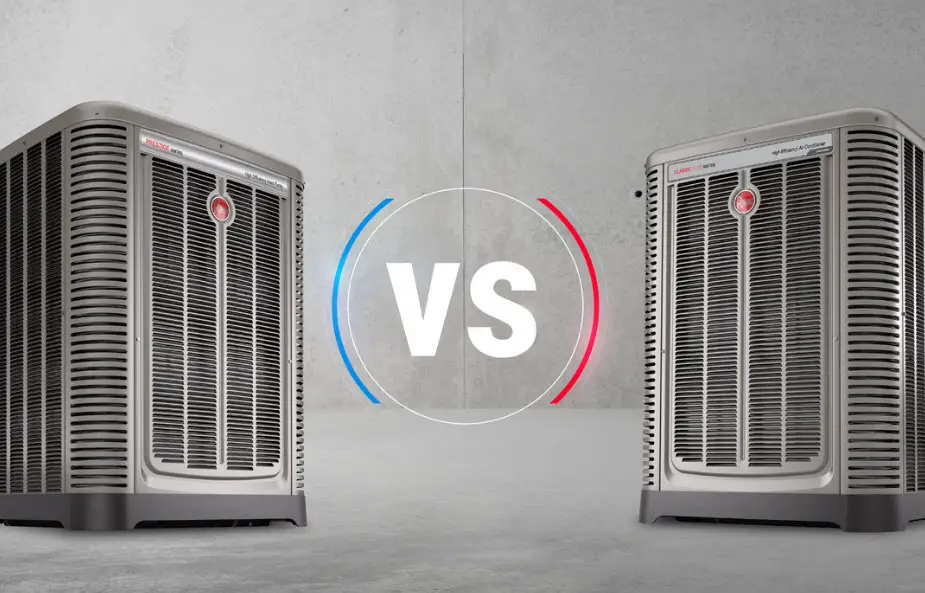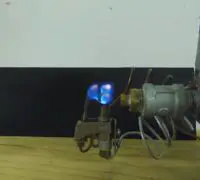Many appliances help us achieve excellent comfort in our homes. Air conditioners, furnaces, air handlers, and heaters are some to name. Even if the devices are relatively straightforward in what they do, they might interfere with the functions of others, making it difficult for us to tell them apart.
Having said that, we want to help you differentiate between air handlers and furnaces. Both are developed to keep us warm inside and resemble on many levels. However, a few characteristics make them two different devices.
Page Table of Contents
How do they work?
One way to understand the differences between a furnace and an air handler is by understanding how the two devices work.
How does a furnace work?
Most households have furnaces as primary heating devices. A furnace generates and distributes heat in a house, ensuring a pleasant temperature inside. Briefly, a furnace is a complete device that produces heat, warms the air and spreads the warm air throughout a house.
The heat that the furnace produces goes to the heat exchanger, which takes it from the hot gases into the air blown over it. The blower will push the heated air through the ductwork into the designated areas inside the house.
Furnaces are part of a forced-air system, which pushes air through and inside the rooms. The process starts by collecting air from the room’s system, then heating it and spreading it back to the rooms through the vents.
They use various types of fuels, so they come in multiple styles:
Gas furnaces
The furnaces in this category use gas to heat the air. Most furnaces in the world use gas.
Oil furnaces
These furnaces are typically standard in regions where natural gas isn’t readily available.
Electric furnaces
As the name suggests, these furnaces generate heat by using electric resistance. They’re a good choice for warm climates as they are less effective than gas and oil furnaces.
How Does an Air Handler Work?
The air handler, also known as the AHU (Air handling unit), is designed to heat our homes, but it does it differently than the furnace. The air handler doesn’t produce heat but moves heated air in the forced-air system. It’s a system that uses blowers (powerful fans) to distribute the air through a duct system. The air handler is commonly a large metal box, but you can also find small units (known as terminal units).
The air conditioning mode
In the air conditioning mode, the air handler’s blower will collect moist warm air through the return ducts. Inside the device, the humid air will go over the coil and the refrigerant inside the coil will cool the air down. It does it by absorbing the heat out of the air. As this happens, the coil gets cold, but the moisture condensed out of the moist air falls onto the coil, making it more pleasant.
The air handler’s blower will push the cool, dry air through the supply ducts inside the house. The hot refrigerant goes to the heat pump or the external AC and into a coil. Here, it will be extracted and ultimately distributed.
Commonly, the air handler is one of the indoor parts of the air conditioner units (mini-splits). The condenser is the outdoor component and combined, and the components give the split air conditioning system.
The heat mode
Heat pump systems can also use air handlers. Since heat pumps will heat, the principle is reversed. The refrigerant will collect the heat outside and take it inside. When it gets inside the air handler’s coil, the refrigerant will give the heat collected from outside. As a result, the coil will get hot.
The air handler’s blower will collect cool air into the appliance and push it over the coil and make it heated air. The heated air will get inside the house through the ductwork.
Typically, the air handler can cool or heat a house according to the thermostat setting and the mode. When the heat mode is on, the heat pump coils will heat the air and the home. Similarly, when it’s in cool mode, the refrigerant in the AC system will absorb heat from the air and cool it down.
Where to use a furnace? When is the air handler ideal?
Typically, the furnace is the most effective equipment to heat a home. It has more heating power and can perform in very low temperatures. If you live in a place with freezing winters, you should use a furnace to heat your home.
An air handler doesn’t produce heat but uses the heat pump coils to heat the air. As a result, the heating power of the air handler is somewhat limited. As the heat pump collects the heat from outdoors, the air handler isn’t the most dependable device in cold temperatures. However, the air handler is versatile as it can heat and cool a house. If you live in an area with warm winter, you can use the air handler both in the winter and summer.
What are the best parts about the two appliances?
When comparing the two appliances, we need to take a look at the benefits of each of the two:
Furnace
- It has an excellent heating power
- It’s energy efficient
- It’s efficient in freezing climates
- It uses various types of fuels, each with benefits
- It’s affordable to install
Air handler
- It’s versatile as it can cool or heat the air
- It’s an excellent choice for climates with not-so-harsh winters
- It’s not big and has a small footprint
- It doesn’t produce carbon monoxide or gas leaks
Both devices have downsides!
As with anything else, furnaces and air handlers are not perfect appliances. Each of them has flaws, even though they’re minor:
Furnace
- Runs on fossil fuels
- It doesn’t have cooling options
- It runs rather loud
- It can cause gas and carbon monoxide leaks
- Its footprint is more significant than the air handler’s footprint
- The operating costs can get high
- Gas furnaces don’t have a very long lifespan
Air Handler
- The outdoor unit and the indoor blower can get loud
- There’s a risk of refrigerant leaks from the heat pump coils or AC
- It’s not dependable in temperatures below 30F degrees
- It requires frequent maintenance
- The replacement costs are high
What about a hydronic air handler vs. a furnace?
Both hydronic air handlers and the furnace heat the air inside a house to give us the comfort we need. However, they use various methods to achieve the goal. A hydronic air handler will use water to heat the air inside. They’re more complex than regular air handlers and dependable than the standard models.
As mentioned, the furnace burns fuels (natural gas, propane, oil, etc.) to generate heat. The heat comes as heated gases that heat the indoor air blowing over the heat exchanger. The warm air will get inside the house through the ductwork.
On the other hand, the hydronic air handler will use hot water that runs through the coils to warm the indoor air (if it’s in heat mode). As the indoor air goes over the coils with hot water, it will absorb the heat from the coils. Later on, the heated air will spread throughout the house.
In cooling mode, the water in the coils is cold and absorbs heat from the indoor air. The cool air will be distributed throughout the house in the same way as the warm air.
The most crucial difference between the furnace and the air handler is that the air handler spreads cooled or heated air by another device, while the furnace generates and pushes heat. The two appliances have similar functions and resemble in appearance, so it’s understandable why people confuse them at times.
To some extent, it’s safe to say that the two appliances are more alike than they are different. We can also say that the furnace is a specific type of air handler to generate heat. To sum it up, you need to remember that an air handler is not a heat source, but a furnace is.






